Hydrogen peroxide
Hydrogen peroxide diluted with water in a 2: 1 ratio is widely used to remove stains or streaks on glossy facades. Truth doesn't always help. Use her possible only for kitchens made of MDF and chipboard, and even then with great care.
At first glance, a harmless solution can react with the film or paint covering the headset and leave highlighted areas on it.
Glass spray is an excellent replacement.... It removes fingerprints, streaks, and fresh stains from the surface of facades, and will not leave streaks even on a glossy surface. Just spray it on the dirt, wait 3-5 minutes and wipe the surface with a microfiber cloth.
Look more life hacks from our grandmothersthat will make your life much easier.
Ammonia
Ammonia, half diluted with water, is classified as "heavy artillery". It is positioned as first aid for any, even the most chronic stains, but it smells just disgusting.
You can use such a folk remedy only with gloves, a protective mask and being in a highly ventilated room.
Instead of ammonia, the kitchen is perfect will wash off the melamine sponge... It is inexpensive and cleans even the most stubborn stains without the use of household chemicals. The special rubber fibers in the composition seem to "catch" all the dirt on themselves.
If you are too lazy to clean up, take a look examples before and after cleaning - it inspires!
The sponge only needs to be moistened with water, squeezed out and started to wash. The disadvantage of melamine is that it can only wash external kitchen fronts that are not in contact with dishes and food. Loose pieces must be collected and discarded, like the sponge itself, immediately after use.
When used, the sponge breaks and crumbles.
Soda + vegetable oil
A paste made from baking soda and sunflower oil is relatively safe. It should not only wash away dirt, but also polish the facades to a shine. However, despite its fine structure, baking soda is a real abrasive for glossy and varnished surfaces.
The primary effect of the use of the product can please, because the oil will "close" all the scratches from the soda. But regular cleaning of the kitchen with such a paste will cause irreparable damage to its facades.
It will be more effective to clean kitchen furniture special industrial paste or melamine sponge, and for shine - walk with polish. It will create a protective layer on the surface of the furniture that repels dust and steam drops.
At first, scratches may only be visible under a certain lighting angle.
Table vinegar + salt
Folk recipes promise that a gruel of 9% vinegar and table salt will wash away even the most old and stubborn stains. Salt is much larger than soda, so it can damage not only varnished surfaces, but also MDF, as well as chipboard facades.
In this recipe, it acts as a hard abrasive and leaves small scratches on all surfaces. After a while, scuffs will appear on the furniture.
Better find the right liquid for washing kitchen furniture. They are of two types: gentle and alkaline. Eco-products are suitable for natural wood kitchens. Other types of facades can be washed with alkaline liquids, which will easily deal with stains.
You can choose the right product in any store, based on your preferences and financial capabilities.
Table vinegar + alcohol
A solution of 1 part alcohol or vodka, 1 part 9% vinegar and 2 parts water should dissolve dried fat spots literally "before our eyes." In fact, in order to wipe them off, you need to try hard, and microcracks and yellow spots may appear on the surface of inexpensive facades from alcohol and vinegar.
To truly dissolve greasy drops and wash them effortlessly from the kitchen surface you will need a garment steamer or regular iron... From a distance of 15-20 cm, walk with hot steam to places in need of urgent cleaning.
Thanks to the "bath" effect, impurities are saturated with moisture, become slightly soaked and easily "move away". All that remains is to wipe them off with a sponge and detergent.
It is almost impossible to prevent the appearance of stains and streaks on the kitchen set. The main thing is not to use hard brushes and abrasives when removing them, and from time to time treat furniture with a mixture of polish and wax.

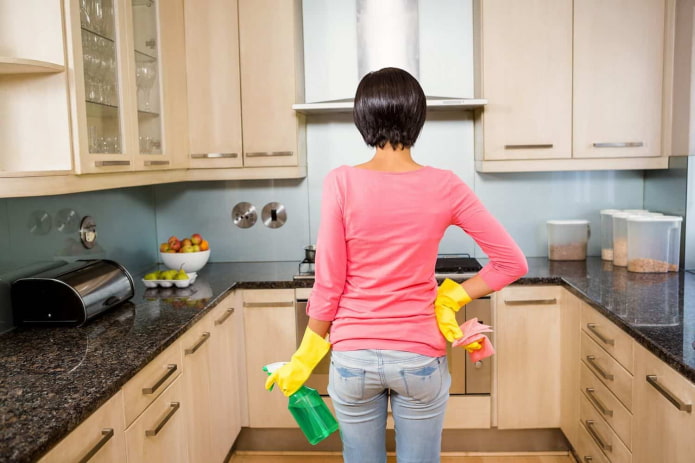
 10 practical tips for arranging a small kitchen in the country
10 practical tips for arranging a small kitchen in the country
 12 simple ideas for a small garden that will make it visually spacious
12 simple ideas for a small garden that will make it visually spacious
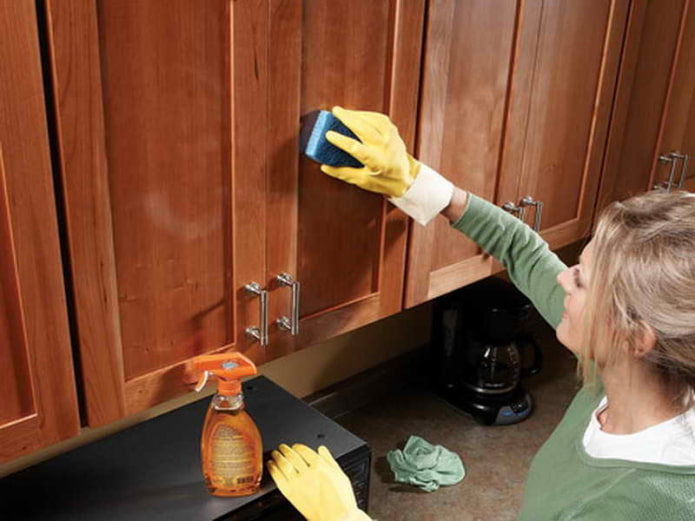
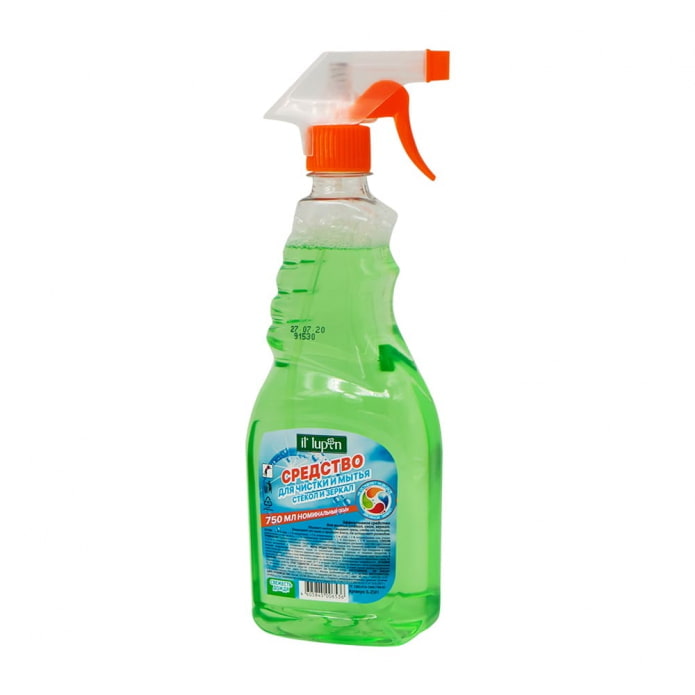

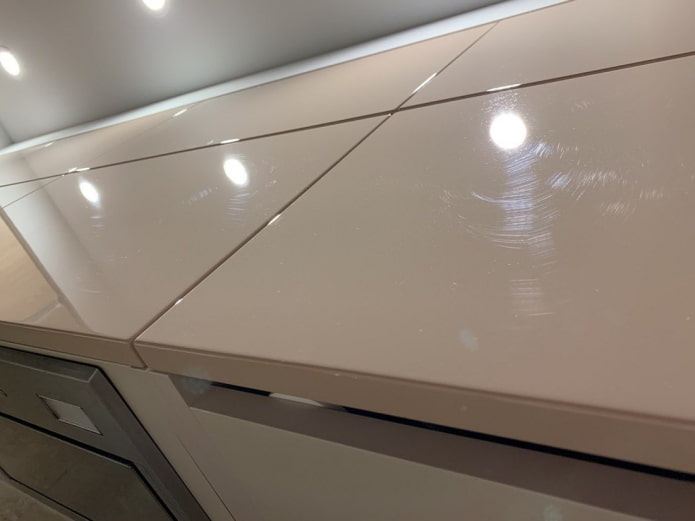

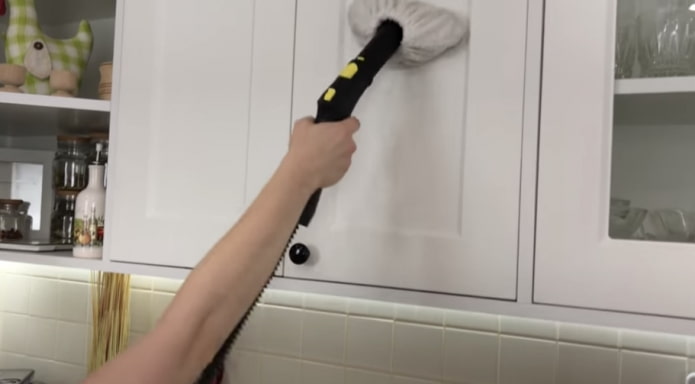
 How to choose the color of your kitchen sink?
How to choose the color of your kitchen sink? White kitchen set: features of choice, combination, 70 photos in the interior
White kitchen set: features of choice, combination, 70 photos in the interior Black set in the interior in the kitchen: design, choice of wallpaper, 90 photos
Black set in the interior in the kitchen: design, choice of wallpaper, 90 photos How to choose curtains for the kitchen and not regret it? - we understand all the nuances
How to choose curtains for the kitchen and not regret it? - we understand all the nuances Design of a white kitchen with a black countertop: 80 best ideas, photos in the interior
Design of a white kitchen with a black countertop: 80 best ideas, photos in the interior Kitchen design with green wallpaper: 55 modern photos in the interior
Kitchen design with green wallpaper: 55 modern photos in the interior